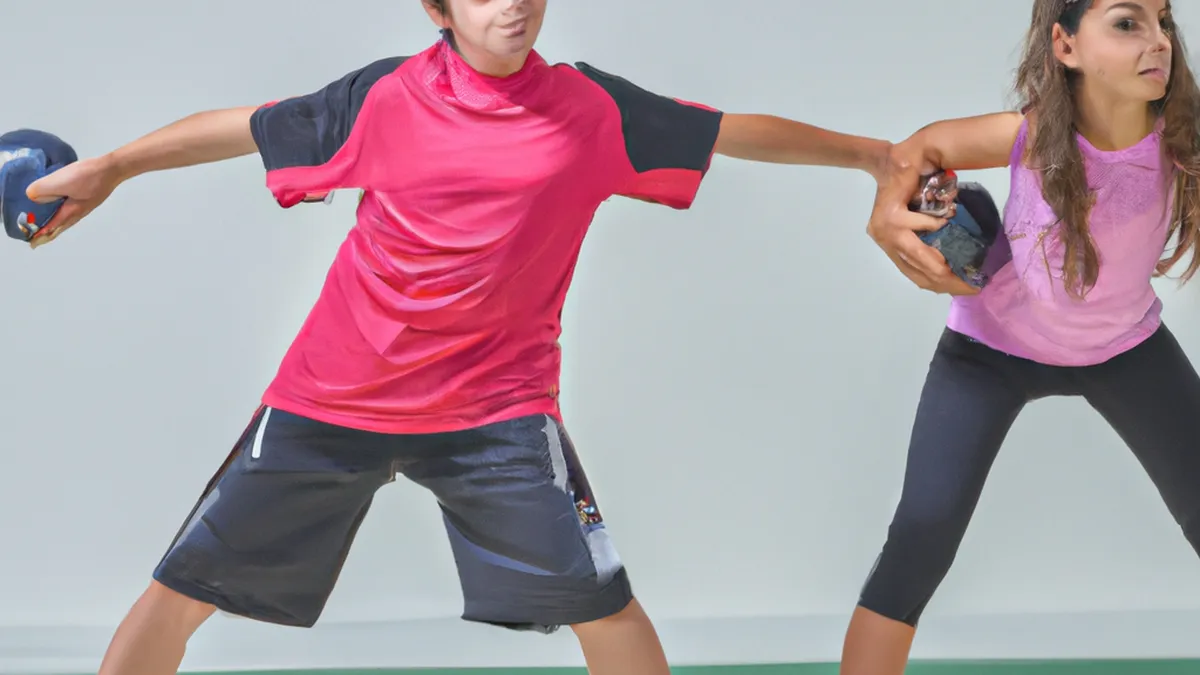Reinforce Athletic Foundations Through Core Stability
The Role of Core Stability in Enhancing Overall Athletic Performance in Youth Sports
Core stability significantly enhances athletic performance in youth sports. A strong core stabilizes the body and supports athletic movements. Young athletes, still developing skills, benefit greatly from this stability. This blog explores how core stability boosts performance, offers training tips, and highlights the advantages of a strong core.
Understanding Core Stability
Core stability involves the coordinated effort of abdominal, lower back, and pelvic muscles. These muscles form a solid foundation for movement. Strong core stability improves young athletes’ balance, coordination, and overall athleticism.
The core connects the upper and lower body, allowing efficient energy transfer in sports. For instance, a stable core helps a young soccer player maintain balance and power while striking the ball.
Importance of Core Strength for Young Athletes
Young athletes often participate in sports requiring agility, speed, and power. A strong core supports these physical demands and aids in injury prevention. Weak core muscles lead to improper use of other muscle groups, increasing injury risk.
Additionally, a strong core improves posture. Good posture maximizes performance and minimizes fatigue. It also helps young athletes maintain focus during games.
Tips for Building Core Stability
Building core stability requires no complex equipment. Here are practical tips for young athletes:
1. Incorporate Bodyweight Exercises
Bodyweight exercises effectively build core stability. Movements like planks, bridges, and bird-dogs engage multiple core muscles. These exercises are simple and can be performed anywhere.
For example, a plank challenges the entire core. Athletes hold a position while engaging their abdominal muscles. Start with short intervals and gradually increase duration.
2. Focus on Functional Movements
Incorporate exercises that mimic sports-specific movements. Rotational exercises enhance performance in sports like baseball and tennis. These movements develop the core and improve overall athletic skills.
Exercises like medicine ball twists or side lunges engage the core and promote agility. Focus on technique and control for maximum benefits.
3. Include Stability Challenges
Use stability tools like balance boards or stability balls for added challenge. These tools intensify core muscle engagement, improving balance and coordination.
Begin with simple exercises and progress to more challenging variations. For instance, perform squats on a balance board. This approach strengthens the core and enhances overall stability.
Benefits of Core Stability in Youth Sports
Investing time in core stability training provides numerous benefits. Here are key advantages:
Enhanced Athletic Performance
Improved core stability leads to better athletic performance. A strong core supports explosive movements like sprinting and jumping. It also helps athletes maintain proper form during dynamic activities.
For example, a stable core enables a basketball player to execute a powerful jump shot. It also allows a swimmer to maintain streamlined positioning in the water.
Injury Prevention
Core stability training is vital for injury prevention. A strong core stabilizes the spine and reduces lower back injury risk. It also helps prevent injuries in areas like the knees and ankles.
Strong core muscles absorb impact during high-intensity activities, providing essential protection for young athletes.
Increased Confidence
As young athletes strengthen their core, they gain confidence in their abilities. Improved balance and stability lead to better performance. This newfound confidence encourages them to push limits and strive for excellence.
Athletes who feel strong and capable are more likely to enjoy their sport, fostering a lifelong love for physical activity.
Conclusion
Core stability is essential for enhancing overall athletic performance in youth sports. Prioritizing core strength helps young athletes improve balance, coordination, and power. Incorporate bodyweight exercises, focus on functional movements, and add stability challenges to training. The benefits of a strong core include enhanced performance, injury prevention, and increased confidence. Investing in core stability lays a solid foundation for young athletes’ athletic journeys.
Below are related products based on this post:
FAQ
What is core stability and why is it important for young athletes?
Core stability refers to the coordinated effort of abdominal, lower back, and pelvic muscles that create a solid foundation for movement. It is crucial for young athletes as it enhances balance, coordination, and overall athleticism, allowing for efficient energy transfer in sports and helping to prevent injuries.
What are some effective exercises to improve core stability in youth sports?
Effective exercises for building core stability include bodyweight movements like planks, bridges, and bird-dogs. Additionally, incorporating functional movements such as medicine ball twists and side lunges, as well as using stability tools like balance boards, can further enhance core strength and overall athletic performance.
How does core stability contribute to injury prevention in young athletes?
Core stability plays a vital role in injury prevention by stabilizing the spine and reducing the risk of lower back injuries. A strong core absorbs impact during high-intensity activities and helps maintain proper form, which minimizes the risk of injuries in areas such as the knees and ankles.















Post Comment